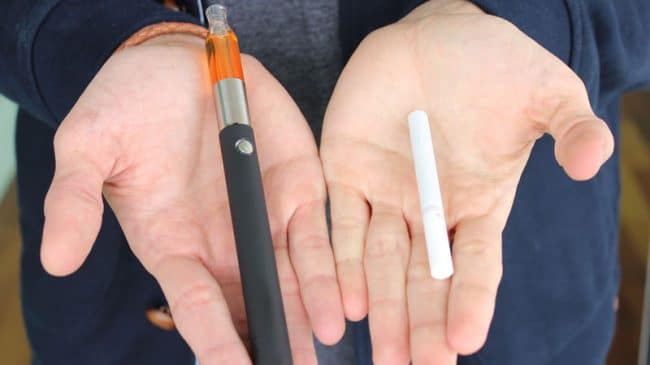The Centers for Disease Control and Prevention is misleading the public about the risks of smokeless tobacco in ways that are unethical and damaging to public health.
An essential ethical requirement of public health bodies is to give accurate information about the risks of certain products, including relative risk between products. On this count, the CDC is failing the American people.
Entrepreneur Elevator Pitch Ep2: ‘Has Anybody Not Seen That Product?’
Watch Full Screen
An event launched Feb. 23 by UCanQuit2.org, a project of the Defense Department, and cheerily promoted by the CDC called “The Great American Spit Out,” is a prime example.
The event urged service personnel to quit smokeless tobacco. A laudable goal one might think, as quitting tobacco cold turkey can improve health. So what’s the problem with this seemingly innocuous campaign?
The problem is the total failure to spell out the harms of smokeless tobacco relative to combustible cigarettes. Smokeless tobacco is estimated to be around 90 percent safer than cigarettes. There is not a single recorded death from a product such as snus, a smokeless, moist-powder tobacco product.
But much of the public is unaware of this fact. According to a National Youth Survey, 31.8 percent of respondents said smokeless tobacco was riskier than cigarettes, and just 7.1 percent reported smokeless was less risky. In total, 93 percent of those surveyed didn’t know smokeless tobacco is less hazardous than cigarettes.
This is important as many tobacco consumers are dual users, meaning they use more than one tobacco product. The best health outcome would be to give up tobacco altogether, but many users find this either too difficult or wish to continue using tobacco because of the pleasure they derive from it.
In this scenario, it is vital consumers are aware of the risks of different tobacco products so they can make an informed choice and reduce their risk accordingly. Switching from very high-risk cigarettes to lower-risk smokeless products would indeed reduce a consumer’s level of risk.
But UCanQuit2’s tobacco cessation service appears dead-set against providing consumers with this knowledge. Professor David T. Sweanor, a veteran tobacco control advocate, asked the service whether there was any difference in terms of risk between smoking cigarettes and using smokeless tobacco.
While the cessation coach was able to reel off reams of statistics and ensured the “abstinence is best” message was reinforced ad nausea, Sweanor could not get a simple answer to the question of whether smokeless tobacco is less risky than smoking cigarettes (full conversation below).
An abstinence-only approach restricts the possibility for harm reduction and as we have seen from other public health campaigns such as sexual health and drug use, abstinence-only messages can only go so far.
“A very basic ethical requirement in public health efforts is to not mislead the public,” says Sweanor. “The CDC has been repeatedly informed, over many years, that it is failing this standard when it comes to smokeless tobacco. Yet they persist in pushing a fundamentally misleading and unscientific abstinence-only agenda on the tens of millions of tobacco consumers whose lives are literally on the line.”
The fundamental problem with well-meaning public health campaigns such as the “The Great American Spit Out” is that if they refuse to give the full picture about the relative risk of different products, they undermine their own credibility and public health in the process.
“To be successful, public health efforts require public trust,” adds Sweanor. “When the CDC actively misleads the public on any topic it hurts on all others. If the agency wants to know why large segments of the population discard truthful information from the agency, it can start by recognizing that deceiving the public on any issues destroys credibility on all others.”

